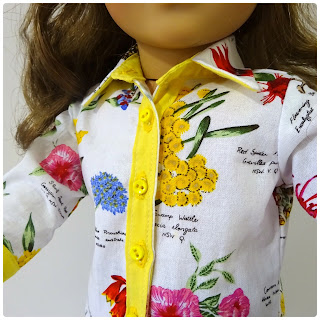 |
| A perfect curved hem |
I am a big fan of the overlocker. I find it indispensable for all sorts of sewing projects except quilting and patchwork.
 |
| On my samples I don't even change the overlocker thread to match. You hardly see it anyway. |
If you don't want the overlocker finish inside your skirt then you can try this more labour intensive method.
I read about this method for sewing curved hems for people clothes and thought it would do nicely for flared doll clothes with just a bit of scaling down.
Before you cut out your garment you will need to make sure you have a hem allowance of about 3/4".
I stitched on the waist band. Now I am ready for the hem.
Once you get to the hem step:
- Stitch around the hem edge 3/8" in from the raw edge with a regular sewing stitch.
- Press the edge to the inside along the stitching line. Work around with the point of the iron.
- Stitch again 1/8" from the folded edge.
- Carefully trim away the raw edge close to the stitching. Slide the scissors behind the fabric. It is easier to do this with the garment on a table. Put some tension on the trimmed off strip with your left hand.
- Fold the hem over again keeping it as narrow as possible.
- Stitch the hem.
This method works great with quilting cotton. It will probably work with more difficult fabrics too.
This skater skirt is part of my 2 skirt pattern called Hankie Skirt and Skater Skirt.
If you like my How to Sew Doll Clothes posts why not Like me on Facebook or follow me on Google+ to keep up with my blog.
Happy Sewing,
Val

























































